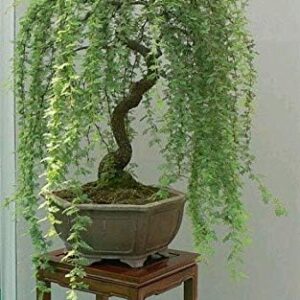Do you love gardening and want to keep your plants happy and healthy? One of the biggest challenges that gardeners face is dealing with plant pests and diseases. These pesky invaders can wreak havoc on your plants, causing damage to leaves, flowers, and even the entire plant if left untreated. But fear not, there are steps you can take to spot and stop plant pests and diseases before they take over.
First and foremost, it’s important to know what to look for when inspecting your plants for pests and diseases. Keep an eye out for common symptoms such as yellowing or discolored leaves, holes in leaves, distorted growth, and unusual spots or markings. Also be on the lookout for any unusual insects or other pests hanging around your plants. These can include aphids, spider mites, whiteflies, and caterpillars, among others.
To prevent pests and diseases from taking over your plants, it’s essential to practice good garden hygiene. This means keeping your garden clean and tidy by regularly removing dead leaves, weeds, and other debris that can harbor pests and diseases. It’s also a good idea to space your plants properly to allow for good air circulation, as crowded plants are more susceptible to disease.
Another important step in preventing plant pests and diseases is to choose the right plants for your garden. Before purchasing new plants, do some research to find out which ones are more resistant to pests and diseases. Native plants are often a good choice, as they are well adapted to the local environment and are less likely to suffer from pest and disease problems.
In addition to choosing the right plants, it’s crucial to provide the proper care for your garden. Make sure your plants are receiving the right amount of water, sunlight, and nutrients to keep them healthy and strong. Weak and stressed plants are more vulnerable to pests and diseases, so it’s important to take good care of them.
Once you’ve taken these preventative measures, it’s still important to regularly inspect your plants for signs of pests and diseases. Catching problems early is key to preventing them from getting out of control. If you do find pests or diseases on your plants, there are several treatment options available.
One common method of dealing with plant pests is to handpick them off the plants. This can be time-consuming, but it can be an effective way to control small infestations. You can also use a strong stream of water to wash pests off your plants, or try using insecticidal soap or neem oil to kill them.
For fungal and bacterial diseases, it’s important to prune affected parts of the plant and remove them from the garden to prevent the disease from spreading. You can also treat these diseases with fungicides or bactericides, but be sure to carefully follow the instructions on the label to prevent harm to your plants.
Another important tool in the fight against plant pests and diseases is beneficial insects. These insects, such as ladybugs, lacewings, and parasitic wasps, can help keep pest populations in check by preying on them. You can attract beneficial insects to your garden by planting a diverse mix of flowering plants and avoiding the use of broad-spectrum pesticides that can harm them.
In some cases, it may be necessary to use chemical pesticides to control pest infestations. However, it’s important to use these products responsibly and as a last resort. Be sure to read and follow the instructions on the label carefully, and avoid using pesticides that are harmful to bees and other beneficial insects.
Overall, the key to spotting and stopping plant pests and diseases before they take over is to be proactive and attentive to your garden. By practicing good garden hygiene, choosing the right plants, providing proper care, and monitoring your plants regularly, you can keep your garden healthy and thriving. Remember, prevention is always better than a cure when it comes to pest and disease control. With a little diligence and care, you can enjoy a beautiful and pest-free garden for years to come.






